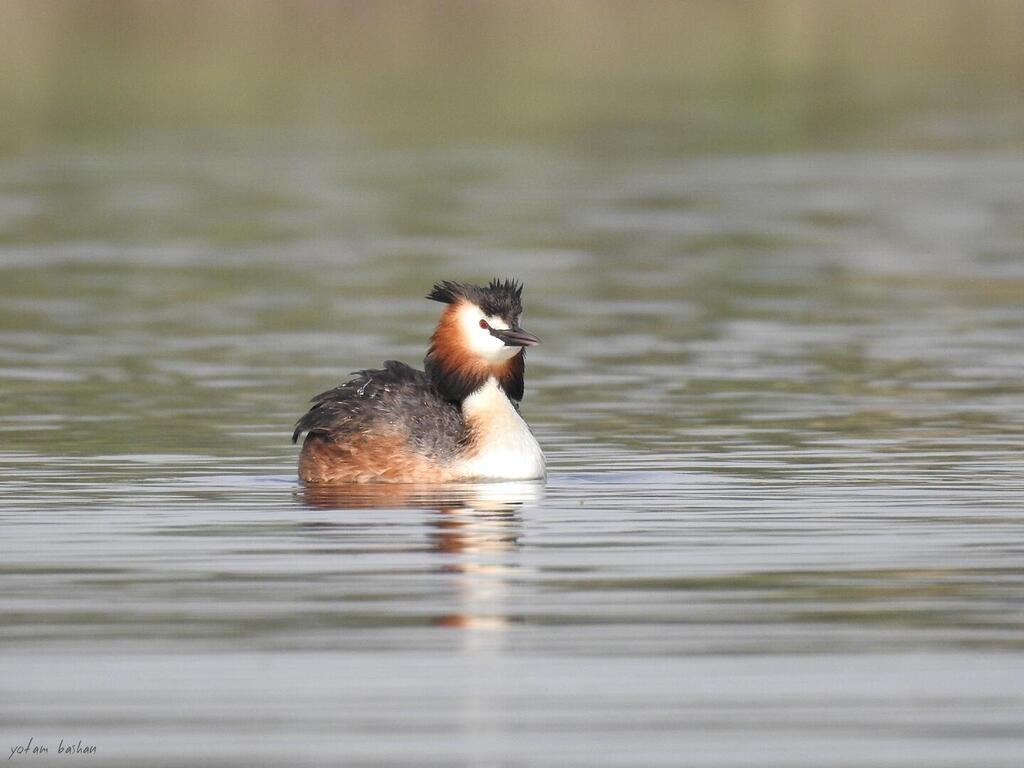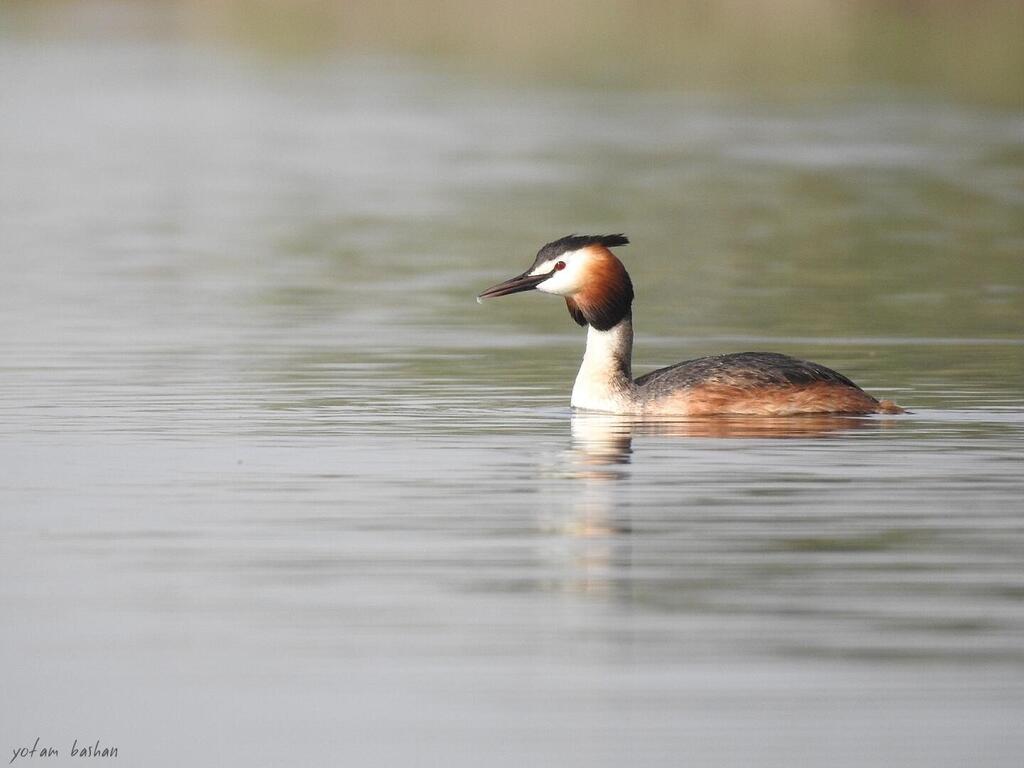A mother grebe and her two little chicks
(Video: Yoav Perlam, the Society for the protection of nature)
After years of unsuccessful attempts, environmentalists managed to capture on tape an adult female great crested grebe and her two little chicks near the central city of Rehovot.
Other stories:
Dr. Yoav Perlman from the Society for the Protection of Nature and ornithologist Piki Ish-Shalom were the first to spot the nesting when they arrived at the reserve last Saturday and saw a female carrying two hatchlings on her back, hidden under her tail feathers.
This is the first successful nesting of the species documented in central Israel and a rare sight in the Holy Land in general. In recent years, a few pairs of great crested grebes have begun nesting in water reservoirs in the Golan Heights in the north.
"A few weeks ago, we saw the pair building a nest, and last Saturday we finally saw the hatchlings on the mother's back. We couldn't capture the hatchlings in a photo or video, but in the footage, you can see the mother attending to her hatchlings as she moves her head toward them," said Dr. Perlman.
The great crested grebe is a gender-dimorphic species, meaning both the male and female boast colorful plumage during mating season.
They grow decorations that resemble large reddish "ears" on the sides of their heads and two black "whiskers" protruding from their black "cap". Great crested grebes are famous for their impressive courtship displays where pairs perform synchronized "aqua-ballet" above water bodies.
They swim and run, facing each other, across the water, stretching their necks and moving them in both directions as if in a constant rhythm. Great crested grebes are found in large bodies of water surrounded by reeds.
In winter, they are often observed at sea as well. The great crested grebe feeds on fish, crustaceans, aquatic insects, and frogs. The neck is long, slim, and white, and the beak is also quite long. In winter plumage, the face and body are white, the cap is black, and the nape and back are dark, while the sides of the body are light brown.
The juvenile resembles the adult in winter plumage with darker spots on its face. Its global population is stable but has been severely affected in the past due to extensive hunting. They were hunted for their decorative feathers and the tight feathers, which are water-resistant, served as a fur substitute.
Normally, the great crested grebe is a migratory species that does not nest in the Holy Land, thus emphasizing the unique nature of this event. It was mainly observed in reservoirs in the north and center of the country. For example, in the winter of 2014, a single bird was found in a reservoir in the Jezreel Valley for the first time since the drying up of the Yamit reservoir.
In the summer of 2015, another bird was found in a water reservoir in the Golan Heights. In the summer of 2018, four breeding pairs were recorded in the Jezreel Valley, and two additional pairs in the Golan Heights. In most cases, the breeding attempts failed, and now, as mentioned, there is successful documentation of breeding in the central part of the country.





